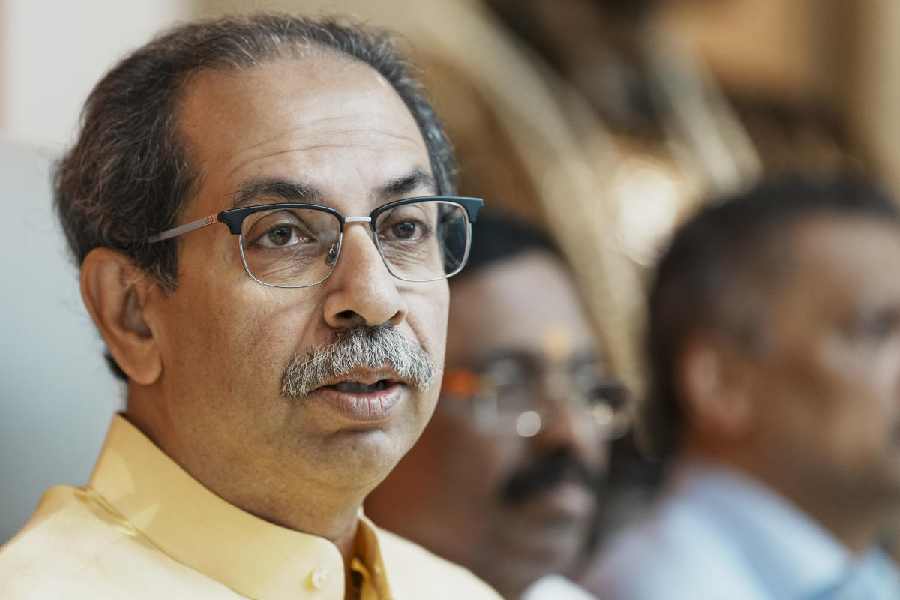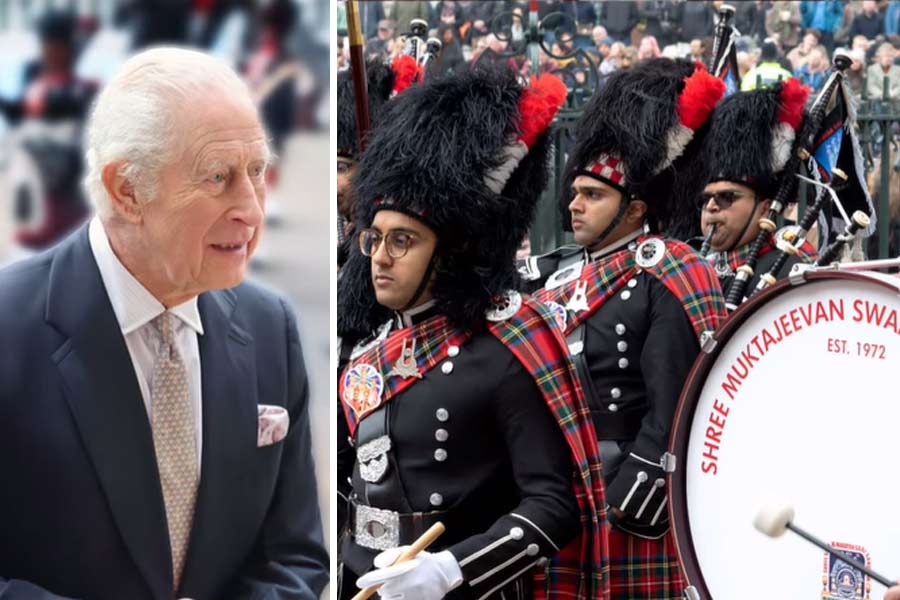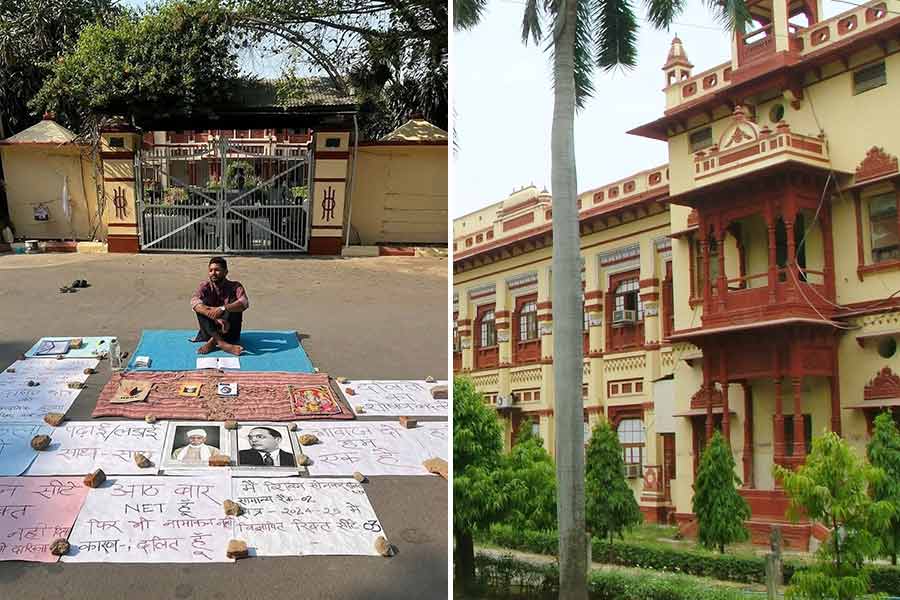 |
| Installation of a Krishnagar studio for T2. Picture by Sanjoy Chattopadhyaya |
The folk art of Bengal will be one of the many components of the assemblage of varied art works from various regions of the country that will be on display on the 1.2km stretch of Terminal 2 or T2, the brand new terminal of Mumbai’s Chhatrapati Shivaji International Airport.
It is scheduled to open in phases between September and next July. The Artwork Programme, conceived and designed by Rajeev Sethi, the scenographer and chairman of the Asian Heritage Foundation, is meant to give the thousands who fly into the country an impression of our kaleidoscopic culture.
The new airport located in Andheri East near Sahar Road is being promoted as the 21st-century gateway to the country’s financial capital in the same way that the Chhatrapati Shivaji Terminus railway station, earlier known as Victoria Terminus (built in 1887), was by train, and the Gateway of India of 1921 vintage, was by sea.
Sethi’s website has some details of the programme: “The Slot Wall runs symmetrically throughout the terminal on all four levels, an immense tableau of India’s plural cultural legacy, living traditions and contemporary artistic expression, presented in six thematic compositions. ‘India Seamless’ consists of four installations, each from one corner of the country — Kashmir, Tamil Nadu, Rajasthan, and Bengal.”
The large works from Bengal meant for this terminal were displayed for a short period over the past weekend on the ground floor of Emami Chisel Art Gallery before being packed off to Mumbai. Some of the works turned out to be magnified versions of Kalighat pats, patachitras from Midnapore, wood carvings from Burdwan, fibreglass versions of the lifelike clay models of Krishnagar, traditional Durga images, a gigantic version of the visage of Durga (larger than any Ravinder Reddy has created), and the multicoloured lights of Chandernagore (rather their fire-proof LED versions), all of which are identified with festivity in Bengal. It will be unfair to pass judgement at this stage, for a lot depends on the works that will be finally displayed in the airport.
Unless they are frequent visitors to India, most foreigners may find all this colour and movement bewildering. But people from this part of the world may find it a trifle tiresome, clichéd even.
Ever since Australians took the patuas of Pingla village of Midnapore West to Melbourne along with contemporary artists for the Tramjatra festival, they, along with Kalighat pats (their unconvincing updated versions included) have become permanent fixtures of all festivals remotely Bengal culture-related.
Bengal has a fascinating range of crafts and textiles, some marginalised. The public rarely gets to hear about these. That could have been highlighted at the Mumbai display.
The “Krishnagar studio” by Subir Pal depicts an artist painting a massive head of Durga with a boy holding a pot of paint. A girl sits in the foreground, and behind her are the statues of Rabindranath and Nazrul Islam and several images in the making of the goddess. Another giant fibreglass head of Durga will merge with the torso and nether limbs of the goddess, painted Kalighat pat style, only blown up several times over.
A giant collage of several pats done by four patuas from Midnapore, namely Gurupada Chitrakar, Mantu, Sanuwar, and Manoranjan, depicts the snaking roads of a city chock-a-block with traffic. Football players, an immersion ceremony and boats vie for attention in other pats that are part of the collage.
Contemporary sculptor Anup Mondal has made a clumsy fibreglass piece that is apparently the five-headed serpent of Manasa Mangal. The “heads” represent the five thematic “heads” of Bengali identity — poetry (who else but Rabindranath would personify it?)/literature, sport, film, art and travel/migration, according to the press release. Rajesh Deb, known for his super-size woodcuts done in the style of the 19th-century Battala prints, also find space here. But it is not a print that he displays. The block — an etched plyboard — itself is on show.











